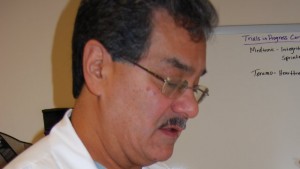In our story “Rushing to Save Heart Attack Patients,” we meet Clayton resident Arlene Skuba, who survived a heart attack at 72, after doctors at the John Muir Medical Center in Concord rapidly unclogged her arteries.
Just 30 years ago, doctors could only watch patients as they suffered their heart attacks. As many as 20 percent of them ended up dying. Now, by rushing patients to the operating table and opening their blocked arteries while their heart attacks are underway, they’re able to save all but 5 percent of those who make it to the hospital.
This success is the result of a national campaign by the American Heart Association, the American College of Cardiology and other groups to reduce the time it takes for the hospital to move a heart attack patient from the hospital door to the operating table. Among healthcare personnel, this is known as “door-to-balloon” time. The balloon refers to the stents cardiologists inflate inside heart attack patients’ coronary arteries to remove the clots blocking blood flow to their heart and causing their heart muscle to die.

“Time is muscle,” said Dr. Agustin Argenal, former chief of John Muir’s catheterization lab, where heart attack patients are treated. “The longer that an artery is blocked, and thereby heart muscle is deprived of oxygen and blood flow, the more muscle is damaged and actually dies.”
At John Muir Medical Center in Concord, door-to-balloon time is usually under an hour, compared to the campaign’s national target of 90 minutes, said nurse Pam Lavering, coordinator for the hospital’s chest pain centers in Concord and Walnut Creek. In 2007, the hospital’s Concord campus averaged 94-minute door-to-balloon times. In the first quarter of 2012, the average was 48 minutes, said Lavering.